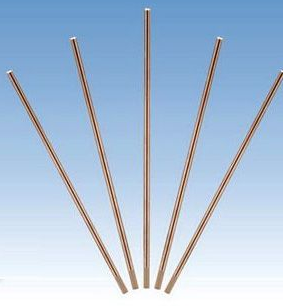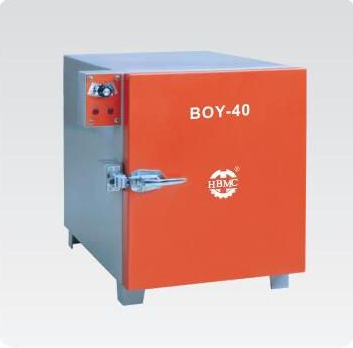Electrodes for Shielded Metal Arc Welding (SMAW) or stick electrodes must be properly stored in order to deposit quality welds. When stick electrodes absorb moisture from the atmosphere, they must be dried in order to restore their ability to deposit quality welds. Electrodes with too much moisture may lead to cracking or porosity.
Operational characteristics may be affected as well. If you've experienced unexplained weld cracking problems, or if the stick electrode arc performance has deteriorated, it may be due to your storage methods or re-drying procedures.
Follow these simple storage, exposure, and redrying techniques to ensure the highest quality welds, as well as the best operational characteristics from your stick electrodes.
Storing Low Hydrogen Stick Electrodes
Low hydrogen stick electrodes must be dry to perform properly. Unopened Lincoln hermetically sealed containers provide excellent protection in good storage conditions. Opened cans should be stored in a cabinet at 250 to 300°F (120 to 150°C)
Low hydrogen stick electrode coatings that have picked up moisture may result in hydrogen-induced cracking, particularly in steels with a yield strength of 80,000 psi (550 MPa) and higher.
Moisture-resistant electrodes with an "R" suffix in their AWS classification have a high resistance to moisture pickup coating and, if properly stored, will be less susceptible to this problem, regardless of the yield strength of the steel being welded. Specific code requirements may indicate exposure limits different from these guidelines.

Created Tungsten Electrode
All low hydrogen stick electrodes should be stored properly, even those with an "R" suffix. Standard EXX18 electrodes should be supplied to welders twice per shift. Moisture-resistant types may be exposed for up to 9 hours.
When containers are punctured or opened, low hydrogen electrodes may pick up moisture. Depending upon the amount of moisture, it will damage weld quality in the following ways:
1. A greater amount of moisture in low hydrogen electrodes may cause porosity. Detection of this condition requires x-ray inspection or destructive testing. If the base metal or weld metal exceeds 80,000 psi (550 MPa) yield strength, this moisture may contribute to under-bead or weld cracking.
2. A relatively high amount of moisture in low hydrogen electrodes causes visible external porosity in addition to internal porosity. It also may cause excessive slag fluidity, a rough weld surface, difficult slag removal, and cracking.
3. Severe moisture pickup can cause weld cracks in addition to under-bead cracking, severe porosity, poor appearance, and slag problems.

Electrode Stabilizing Oven
Redrying Low Hydrogen Stick Electrodes
Redrying, when done correctly, restores the electrodes' ability to deposit quality welds. The proper redrying temperature depends upon the electrode type and its condition. One hour at the listed final temperature is satisfactory. DO NOT dry electrodes at higher temperatures. Several hours at lower temperatures is not equivalent to using the specified requirements.
Electrodes of the E8018 and higher strength classifications should be given no more than three one-hour re-dries in the 700 to 800°F (370 to 430°C) range. This minimizes the possibility of oxidation of alloys in the coating resulting in lower than normal tensile or impact properties.
Any low hydrogen electrode should be discarded if excessive redrying causes the coating to become fragile and flake or break off while welding, or if there is a noticeable difference in handling or arc characteristics, such as insufficient arc force.
Electrodes to be redried should be removed from the can and spread out in the electrode oven because each electrode must reach the drying temperature.









